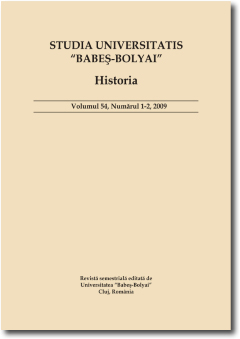COMMUNITIES OF DEVOTION: THE SAXONS IN EARLY MODERN TRANSYLVANIA
COMMUNITIES OF DEVOTION: THE SAXONS IN EARLY MODERN TRANSYLVANIA
Author(s): Maria CrăciunSubject(s): History
Published by: Studia Universitatis Babes-Bolyai
Keywords: devotion; liturgy; religious practice; urban; laity; guilds; artisans.
Summary/Abstract: Focusing on the Lutheran service this study explores devotional behaviour in the context of public worship, particularly practices such as praying and singing and examines their connection to a specific confessional identity. The essay also aims to understand the role of the laity, especially of master artisans in the religious transformation of the community, their position as mediators between the reforming clergy and the broader segments of urban society. Starting from the assumption that devotional patterns are subject to both the regulations of the clergy and the needs of the faithful the essay focuses on religious practice in its attempt to explore the appropriation of the discourse of the church by the Saxon community and considers devotional behaviour an accurate barometer of religious change. Without neglecting the normative documents issued by the clergy, the study takes into account a different set of rules, the statutes of the guilds written by the elite of these corporations. By comparing the two sets of prescriptive sources as well as the post-Reformation statutes to those issued in medieval times, the study measures the degree of appropriation of ecclesiastical norms and the integration of prescribed devotional behaviour.
Journal: Studia Universitatis Babes-Bolyai - Historia
- Issue Year: 58/2013
- Issue No: Special
- Page Range: 156-195
- Page Count: 40
- Language: English

